![]()
![]()
![]()
Use LEFT and RIGHT arrow keys to navigate between flashcards;
Use UP and DOWN arrow keys to flip the card;
H to show hint;
A reads text to speech;
9 Cards in this Set
- Front
- Back
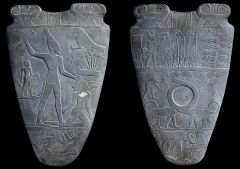
13. |
T- Palette of King Narmer A- unknown D- c. 3000- 2920 BCE M/T- Greywacke, smooth greyish- green siltstone P/S- Predynastic Egypt OL- Nekhen, Eygpt P- King Narmer F- ritual object dedicated to the god, commemorative and symbolic of the kings power and authority DT- low relief, more than 2 ft high, hierarchical scale, registers C- used to mix cosmetics for the king, pharaoh is referred as "strong bull" |
|
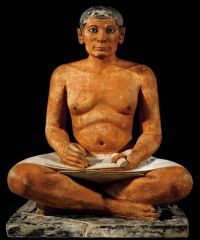
15. |
T- Seated Scribe A- unknown D- c. 2620- 2500 BCE M/T- painted limestone with rock crystal P/S- Ancient Egypt OL- Saqqara, Egypt P- government official F- to represent a scribe for the interior tomb DT- realistic, representational, naturalism C- discovered near the tomb of government official named Kai, placed inside tombs for the afterlife to represent a scribe at work |
|

17. |
T- Great Pyramids (Menkaura. Khafre, Khufu) A- unknown D- c. 2550- 2490 BCE M/T- cut limestone P/S- ancient egypt OL- Giza, Egypt P- n/a F- tombs for pharaohs DT- stone, pyramid, tomb C- most immense stone culture that was built by man so far |
|
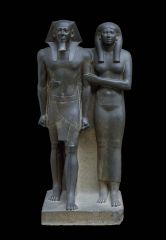
18. |
T- King Mankaura and Queen A- unknown D- c. 2490- 2472 BCE M/T- Greywacke, cut limestone P/S- Ancient Egypt OL- Giza, Egypt P- King Mankaura F- to ensure rebirth of the king in the afterlife DT- body is straight, strong, and eternally youthful with no signs of aging C- most immense stone sculpture that was built by man so far |
|
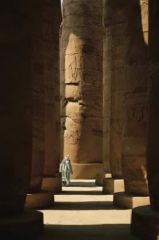
20. |
T- Temple of Amun- Re and Hypostyle Hall A- unknown D- temple: c. 1500 BCE; hall: c. 1250 BCE M/T- cut sandstone, mud brick P/S- ancient egypt OL- near luxor, egypt; new kingdom, 18th and 19th dynasties P- n/a F- temple for the gods DT- sandstone, pillars, inscriptions C- only pharaohs and priests were allowed |
|
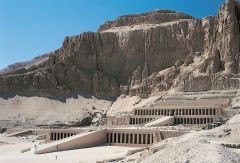
21. |
T- Mortuary temple of hatshepsut A- unknown D- c.1473- 1458 BCE M/T- sandstone, carved into rock P/S- ancient Egypt OL- near luxor, egypt P- hatshepsut F- funerary temple for the queen DT- granite, sandstone, mortuary, queen, carving C- built to commemorate the achievements of the Queen and act as a mortuary for her |
|
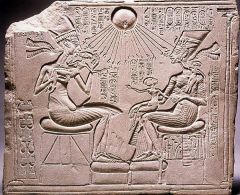
22. |
T- Akhenaton, Nefertiti, and three daughters A- unknown D- c. 1353- 1335 BCE M/T- Limestone P/S- Ancient Egypt OL- New Kingdom (Amarna) P- Akhenaton F- Depicting a new religion, new way of art DT- stylized, sunken relief, representational of life C- Depicting relation between ruler and god, would be home not a public place |
|

23. |
T- Tutankhamuns Tomb, Innermost Coffin A- unknown D- c. 1323 BCE M/T- gold interlay wiith enamel and semiprecious stones P/S- Ancient Egypt OL- New Kingdom P- Tutankhamun F- coffin for the king DT- for the afterlife, gold tomb, mummy C- coffin for the king within his tomb which contained his mummified body |
|
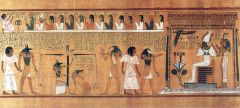
24. |
T- Last Judgement of Hu-Nefer, from his tomb A- unknown D- c. 1275 BCE M/T- papyrus scrolls P/S- ancient egypt OL- new kingdom P- Hunefer F- Depicting Hu-nefer's last judgement DT- scroll made from papyrus, eternal life C- judgement of hu-nefer and if he has lived an eternal life. If he did he can go to the afterlife, if not he gets devoured by mythical creatures which are made from different parts of many different animals. |

